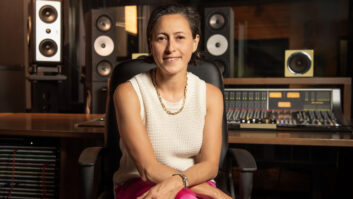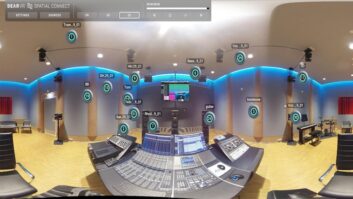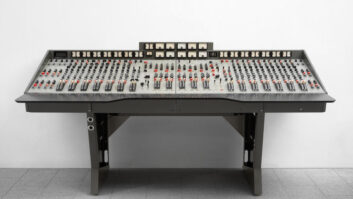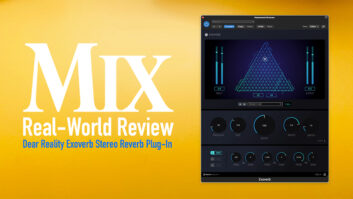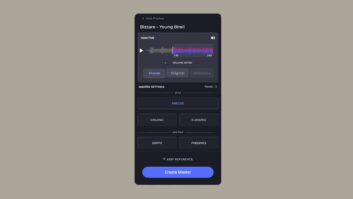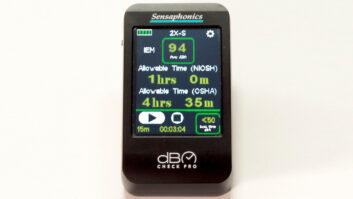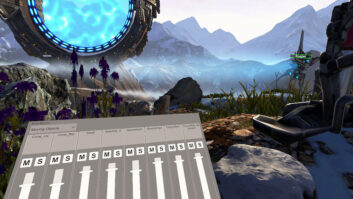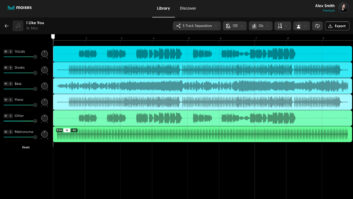Have you experienced any hearing damage?
Robert Scovill: In the early stages of my career, late teens early 20s, I do remember experiencing “ringing” ears after some events. Mostly on gigs where I was doing monitors, because of having to operate a cue wedge at extreme levels. The only other time I remember experiencing that type of phenomenon was while on tour with a P.A. system that had a great deal of phase distortion happening in its distribution of high-frequency devices. It was very fatiguing on a nightly basis, and not long after I started using that particular system, I started incorporating specially designed ear plugs into my nightly routine. I would get the P.A. system spectrally balanced and adjusted once the show started, usually by about four to six songs in, and then insert the plugs, let my perception adjust (not the master fader) and then continue mixing the show.
Advancements in P.A. technology seem to help out the “loudness” perception.
Dave Natale: With the Stones, the system was broken up into about five different zones of cabinets. So we would go around and turn cabinets down. The top cabinets—the very top of the rig that are supposed to throw 300 feet—they don’t get turned down at all. And also the second zone down, they don’t get turned down at all. The third zone down—the one that faces me—they get turned down a little bit and then the zone below that—facing in front of me—they get turned down even more, and then the ones at the very bottom—the ones facing the first 20 rows—get turned down a lot. The same thing with the side array; it gets turned down because you don’t need the amps turned up all the way when the speaker is 25 feet in front of people’s heads. We would walk around, and say, “Damn, that hurts! Do something; make it stop hurting!”
And then another engineer out on that tour, Josh Riebel, he’d EQ the P.A. and then I’d listen to it, and say, “Yeah, that’s fine.” While I was mixing the soundcheck while the backline crew was playing, Josh would run around and make sure the delays were loud enough—we used delays outdoors so you don’t have to try and make it to the back using just the P.A.—the side stuff was turned down, the front stuff was turned down so that it didn’t hurt. And you have to pay attention and it really helps to have somebody else; you can’t just have one guy out there like one front-of-house guy. Because if the front-of-house guy is mixing, then who is walking around listening to stuff? And if you’re walking around listening to stuff, then who is mixing? You just have to have somebody else you can trust; who you know can hear stuff.
What can be done to ensure that the audience maintains a sense of “hearing health”?
Brad Madix: Mainly, I think engineers need to keep shows at a reasonable level. I think it’s fair and reasonable to use the OSHA guidelines for this: www.osha.gov/pls/oshaweb/owadisp.show_document?p_table=STANDARDS&p_id=9736. They are, if I may sum up: anything under 85 dBA is safe; at 90 dBA, exposure should be limited to eight hours; for every 5 dB above that, exposure time is cut in half; and 115 dBA should be avoided—period.
I have read of other standards, specifically the CDC’s National Institute for Occupational Health, along the same lines, only more conservative. They tend to go something like: under 85 dB is safe for eight hours, but for every rise in level of 3 dB, safe exposure time is cut in half. This is called the “equal energy rule.” Because 3 dB more is twice as loud, then the exposure time should be cut in half. In that case, the safe exposure time at 94 dB is about an hour.
Personally, I find this a little over-cautious, especially because there can be a great deal of dynamic range in music, as opposed to a constantly droning 95dBA noise (which would be extremely irritating.) The safe exposure/SPL values are probably in between the two scales. It’s probably wise, though, to mix a few songs at your 94dBA average, and then stick in some earplugs for a few songs (bringing your exposure SPL down, thus allowing yourself more time in front of the P.A.) and then taking them out again for a “reality check.” You can see how this would let you mix a show at 94 dBA, even if it’s over the hour recommended exposure. If you can bring the level down below 85 dBA for 30 or 40 minutes over the course of the show, you would be safe, even in this more conservative scheme.
Chris Rabold: This is what’s hurtful: When you get into a situation where stage volume is really a problem and you suddenly realize, “Okay, I can mix a little louder than I want to to get over the band to give the crowd a mix, or I can mix around the stage.” That’s an example of letting things mix themselves and you just sort of fill in the gaps. That’s a damage-control mix. A lot of times, if I’m mixing at a level where unfortunately I’ve just gotten a little louder than I like but it’s the only place where the mix is really working that night, instead of turning things up, particularly with Panic, where there are three solo instruments, I’ll pull two down and push one up just slightly as opposed to just taking that one and cranking it. With a three-hour show, you really have to pace yourself. And I’ll talk about that with our monitor engineer: “Tonight, I’m really pulling things down rather than pushing things up.”
Bryan Cross: I think a lot of it is not coming from the front-of-house perspective, but coming from monitor world working with front of house. A lot of bands are going to in-ears vs. wedges, and if you put your band on in-ears, instantly you’ve taken all the wedges off the stage and you’ve brought the stage volume down. Then if you work with another band like Train, there is no audible sound onstage; all of our guitar cabinets were in Demeter isolation boxes and using the Palmer DIs and you pull your in-ears out and there’s no noise onstage. It starts from the stage and works its way out.
Is there stress related to the constant advancement in technology and feeling that you need to be on top of it?
Scovill: This is what I suggest to students and new mixers just entering this field as it has served me very well. There was a time when I tried to understand and know something about every piece of gear there was out there. Try to do that today, and you’ll never have any time to actually do any work! Given that there is simply too much technology to keep up on in this day and age, I tell students to concentrate on technique, fundamental knowledge and principles of audio. Make your technique or “method” the cornerstone of the time you spend and the technology will, in turn, either enable or inhibit your ability to achieve a given task. Once you’re doing that, it dramatically narrows the scope of what technology you’ll feel you need to be aware of and up-to-speed on because that technology is shifting and changing every single day. Know what it is that you want or need to do, then find a technology to help you do it. The greatness or success of what you’re trying to accomplish is, more often than not, based in the technique you use, not the technology. In my opinion, the technology should always serve the result, not the other way around.
